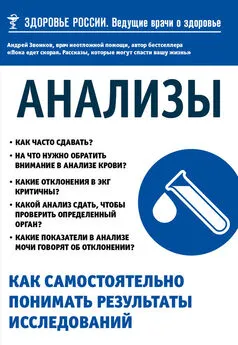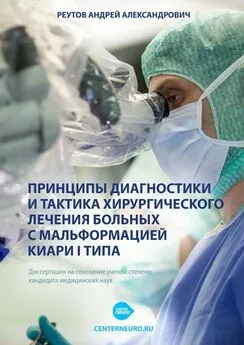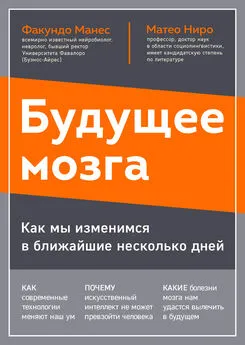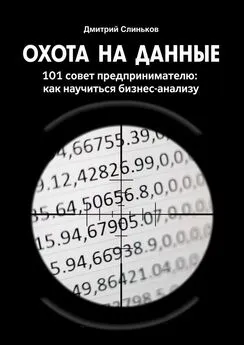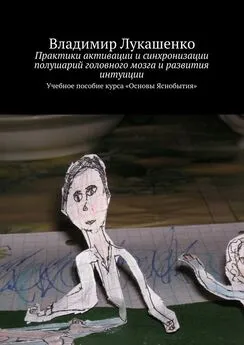Дмитрий Окишев - Хирургическое лечение каверном полушарий большого мозга. Анализ ближайших и отдаленных результатов лечения
- Название:Хирургическое лечение каверном полушарий большого мозга. Анализ ближайших и отдаленных результатов лечения
- Автор:
- Жанр:
- Издательство:неизвестно
- Год:2016
- ISBN:978-5-4483-3412-2
- Рейтинг:
- Избранное:Добавить в избранное
-
Отзывы:
-
Ваша оценка:
Дмитрий Окишев - Хирургическое лечение каверном полушарий большого мозга. Анализ ближайших и отдаленных результатов лечения краткое содержание
Хирургическое лечение каверном полушарий большого мозга. Анализ ближайших и отдаленных результатов лечения - читать онлайн бесплатно ознакомительный отрывок
Интервал:
Закладка:
49. Gross B. A., Batjer H. H., Awad I. A., Bendok B. R. Cavernous malformations of the basal ganglia and thalamus. Neurosurgery. 2009 Jul; 65 (1): 7—18; discussion 18—9.
50. Gross B. A., Lin N., Du R., Day A. L. The natural history of intracranial cavernous malformations. Neurosurg Focus. 2011 Jun; 30 (6): E24.
51. Günel M., Awad I. A., Finberg K., Anson J. A., Steinberg G. K., Batjer H. H. et al. A founder mutation as a cause of cerebral cavernous malformation in Hispanic Americans. N Engl J Med 334: 946—951, 1996.
52. Gunel M., Laurans M. S., Shin D. et al. KRIT1, a gene mutated in cerebral cavernous malformation, encodes a microtubule-associated protein. ProcNatl Acad Sci USA 99: 10677—10682, 2002.
53. Hayman L. A., Evans R. A., Ferrell R. E. et al: Familial cavernous angiomas: natural history and genetic study over a 5-year period. Am j Med Genet 11: 147—160, 1982.
54. Heffez D. S. Stereotactic transsylvian, transinsular approach for deep-seated lesions. Surg Neurol. 1997 Aug; 48 (2): 113—24.
55. Heros R. C., Ojemann R. G., Crowell R. M. Superior temporal gyrus approach to middle cerebral artery aneurysms: technique and results. Neurosurgery. 1982 Mar; 10 (3): 308—13.
56. Huo L., Wu L., Zhang M. Y. et al. Electrocorticography monitoring in microsurgical treatment of solitary cavernous angiomas. Zhong Nan Da Xue Xue Bao Yi Xue Ban. 2008 May; 33 (5): 448—51.
57. Johnson E. W. Cerebral cavernous malformation, familial. http://www.ncbi.nlm.nih.gov/books/NBK1293/
58. Jung K. H., Chu K., Jeong S. W. et al. Cerebral cavernous malformations with dynamic and progressive course. Correlation study with vascular endothelial growth factor. Arch Neurol 60: 1613—1618, 2003.
59. Kahane P., Munari C., Hoffmann D. et al. Approche chirurgicale multimodale des angiomes caverneux epileptogenes. Epilepsies 6: 113—130, 1994.
60. Kamezawa T., Hamada J., Niiro M. et al. Clinical implications of associated venous drainage in patients with cavernous malformation. J Neurosurg. 2005 Jan; 102 (1): 24—8.
61. Kattapong V. J., Hart B. L., Davis L. E. Familial cerebral cavernous angiomas: clinical and radiologic studies. Neurology. 1995 Mar; 45 (3 Pt 1): 492—7.
62. Kilic T., Pamir M. N., Kullu S. et al. Expression of structural proteins and angiogenic factors in cerebrovascular anomalies. Neurosurgery 46: 1179—1192, 2000.
63. Kim D. S., Park Y. G., Choi J. U., Chung S. S., Lee K. C. An analysis cerebral cavernous angiomas. Neurosurgery 38: 662—670, 1996.
64. Kivelev J., Niemelä M., Blomstedt G. et al. Microsurgical treatment of temporal lobe cavernomas. Acta Neurochir (Wien). 2011 Feb; 153 (2): 261—70. Epub 2010. Sep 26.
65. Kivelev J., Niemelä M., Kivisaari R. et al. Long-term outcome of patients with multiple cerebral cavernous malformations. Neurosurgery. 2009 Sep; 65 (3): 450—5; discussion 455.
66. Kivelev J., Niemelä M., Kivisaari R., Hernesniemi J. Intraventricular cerebral cavernomas: a series of 12 patients and review of the literature. J Neurosurg. 2010 Jan; 112 (1): 140—9.
67. Kondziolka D., Lunsford L. D., Kestle J. R. The natural history of cerebral cavernous malformations. J Neurosurg 83: 820—824, 1995.
68. Kraemer D. K. A., Pizzonia J. H. How do vascular lesions cause epilepsy? In Kotagal P., Lüders H. O. (eds): The Epilepsies, Etiology and Prevention. N. Y.: Raven Press, 1999. — Pp. 385—390.
69. Kraemer D. L., Awad I. A. Vascular malformations and epilepsy: clinical considerations and basic mechanisms. Epilepsia 35 Suppl 6. — 1994. — S. 30—43.
70. Kufs H. Uber heredofmiliare Angiomatose des Gehirns und der Retina, ihre Beziehungen zueinander und zur Angiomatose der Haut. Z Gesamste Neurol Psychiatr 113: 651—686, 1928.
71. Kupersmith M. J., Kalish H., Epstein F., Yu G., Berenstein A., Woo H. et al. Natural history of brainstem cavernous malformations. Neurosurgery 48: 47—54, 2001.
72. Labauge P., Brunereau L., Laberge S., Houtteville J. P. Prospective follow-up of 33 asymptomatic patients with familial cerebral cavernous malformations. Neurology 57: 1825—1828, 2001.
73. Laberge-le Couteulx S., Jung H. H., Labauge P., Houtteville J. P., Lescoat C., Cecillon M. et al. Truncating mutations in CCM1, encoding KRIT1, cause hereditary cavernous angiomas. Nat Genet 23: 189—193, 1999.
74. Lanzino G., Spetzler R. F. (eds). Cavernous Malformations of the Brain and Spinal Cord. N. Y.: Thieme, 2008.
75. Levesque M. F., Nakasato N., Vinters H. V., Babb T. L. Surgical treatment of limbic epilepsy associated with extrahippocampal lesions: the problem of dual pathology. Journal of Neurosurgery 75: 364—370, 1991.
76. Li L. M., Cendes F., Andermann F. et al. Surgical outcome in patients with epilepsy and dual pathology. Brain. 1999 May; 122 (Pt 5): 799—805.
77. Liquori C. L., Berg M. J., Squitieri F., Ottenbacher M., Sorlie M., Leedom T. P., et al. Low frequency of PDCD10 mutations in a panel of CCM3 probands: potential for a fourth CCM locus. Hum Mutat 27: 118, 2006.
78. Lonjon M., Roche J. L., George B. et al. Intracranial cavernoma. 30 cases. Presse Med 22%990—994, 1993.
79. Luders H. O., Noachtar S. Atlas of epileptic seizures and syndromes // W. B. Saunders Company, Philadelphia, 2001.
80. Luders H. O., Noachtar S. Epileptic seizures. Pathophysiology and clinical semiology // Churchill Livingstone. N. Y., 2000.
81. Maciunas R. J. Overview of Interactive Image-Guided Neurosurgery: Principles, Applications and New Techniques // Alexander III E., Maciunas R. J. (Eds). Advanced neurosurgical Navigation. N. Y.; Stuttgart: Thieme, 1999. — P. 15—32.
82. Malik G. M., Pasqualin A., Ausman J. I. A new grading system for cerebral arteriovenous malformations. In: Pasqualin A, Pian RD, eds. New Trends in Management of Cerebro-Vascular Malformations. Wien: Springer, 1994. — P. 328—332.
83. Maraire J. N., Awad I. A. Intracranial cavernous malformations: lesion behavior and management strategies. Neurosurgery 37: 591—605, 1995.
84. Mason I., Aase J. M., Orrison W. W., Wicks J. D., Seigel R. S., Bicknell J. M. Familial cavernous angiomas of the brain in an Hispanic family. Neurology 38: 324—326, 1988.
85. Mathiesen T., Edner G., Kihlström L. Deep and brainstem cavernomas: a consecutive 8-year series. J Neurosurg. 2003 Jul; 99 (1): 31—7.
86. Mauri F., Cappabianca P., Gangemi M. et al. Clinical progression and familial occurrence of cerebral cavernous angiomas: the role of angiogenic and growth factors. Neurosurg Focus 21 (1): E3, 2006.
87. McCormick W. F. The pathology of vascular («arteriovenous») malformations. J Neurosurg 24, 807—816, 1966.
88. McLaughlin M. R., Kondziolka D., Flickinger J. C. et al. The prospective natural history of cerebral venous malformations. Neurosurgery. 1998 Aug;43 (2): 195—200; discussion 200—1.
89. Menzler K., Chen X., Thiel P. et al. Epileptogenicity of cavernomas depends on (archi-) cortical localization. Neurosurgery. 2010 Oct; 67 (4): 918—24.
90. Moran N. F., Fish D. R., Kitchen N. et al. Supratentorial cavernous haemangiomas and epilepsy: a review of the literature and case series. J Neurol Neurosurg Psychiatry. 1999 May; 66 (5): 561—8.
91. Mori, Nobuyuki M. D. Microbleeds in Moyamoya Disease: Susceptibility-Weighted Imaging Versus T2*-Weighted Imaging at 3 Tesla Investigative Radiology: August 2008. — V. 43. — Issue 8. — Рp. 574—579.
92. Moriarity J. L., Wetzel M., Clatterbuck R. E., Javedan S., Sheppard J. M., Hoenig-Rigamonti K. et al. The natural history of cavernous malformations: a prospective study of 68 patients. Neurosurgery 44: 1166—1173, 1999.
93. Moriwaki A., Hattori Y., Hayashi Y., Hori Y. Development of epileptic activity induced by iron injections into rat cerebral cortex: electrographic and behavioral characteristics. Electroencephalography and Clinical Neurophysiology 83: 281—288, 1992.
94. Moriwaki A., Hattori Y., Hayashi Y., Hori Y. Electrocorticographic characterization of chronic iron-induced epilepsy in rats. Neuroscience Letters 110: 72—76, 1990.
95. Morrell F. Secondary epileptogenesis in man. Arch Neurol 42:318—335, 1985.
96. Mottolese C., Hermier M., Stan H., Jouvet A., Saint-Pierre G., Froment J. C. et al: Central nervous system cavernomas in the pediatric age group. Neurosurg Rev 24: 55—73, 2001.
97. Otten P., Pizzolato G. P., Rilliet B., Berney J. 131 cases of cavernous angioma (cavernomas) of the CNS, discovered by retrospective analysis of 24,535 autopsies. Neurochirurgie35: 82—83, 128—131, 1989 (Fr).
98. Paolini S., Morace R., Di Gennaro G. et al. Drug-resistant temporal lobe epilepsy due to cavernous malformations. Neurosurg Focus. 2006 Jul 15; 21 (1): e8.
99. Penfield W., Ward A. Calcifying epileptogenic lesions. Archives of Neurology and Psychiatry. 60: 20—36, 1948.
100. Porter P. J., Willinski R. A., Harper W., Wallace M. C. Cerebral cavernous malformations: natural history and prognosis after clinical deterioration with or without hemorrhage. J Neurosurg 87: 190—197, 1997.
101. Porter R. W., Detwiler P. W., Spetzler R. F. et al. Cavernous malformations of the brainstem: experience with 100 patients. J Neurosurg. 1999 Jan; 90 (1): 50—8.
102. Pozzati E., Acciarri N., Tognetti F. et al. Growth, subsequent bleeding, and de novo appearance of cerebral cavernous angiomas. Neurosurgery. 1996 Apr; 38 (4): 662—9; discussion 669—70.
103. Pozzati E., Giuliani G., Nuzzo G., Poppi M. The growth of cerebral cavernous angiomas. Neurosurgery. 1989 Jul; 25 (1): 92—7.
104. Rankin J. Cerebral vascular accidents in patients over the age of 60. 2. Prognosis. Scott Med J 2: 200—15, 1957.
105. Rigamonti D., Drayer B. P., Johnson P. C. et al. The MRI appearance of cavernous malformations (angiomas). J Neurosurg. 1987 Oct; 67 (4): 518—24.
106. Rigamonti D., Hadley M. N., Drayer B. P., Johnson P. C., Hoenig-Rigamonti K., Knight J. T. et al. Cerebral cavernous malformations. Incidence and familial occurrence. N Engl J Med 319: 343—347, 1988.
107. Robinson J. R., Awad I. A., Little J. R. Natural history of the cavernous angioma. J Neurosurg. 1991 Nov; 75 (5): 709—14.
108. Rouer A., Castel J. P., Cohadon F. Les differentes modalites de traitment des cavernomes hemispheriques. Neurochirurgie 35: 115—119, 1989.
109. Russel D. S., Rubinstein L. J. Pathology of Tumors of the Nervous System. — 6th Ed. — London, 1998. — Р. 260—282.
110. Russell B., Rengachary S. S., McGregor D. Primary pontine hematoma presenting as a cerebellopontine angle mass. Neurosurgery. 1986 Jul; 19 (1): 129—33.
111. Shewmon D. A., Shields W. D., Chugani H. T. et al. Contrast between pediatric and adult epilepsy surgery: rational and strategy for focal resection. J. Epilepsy, 1990. — V. 3 (suppl.). — P. 1—15.
112. Simard J. M., Garcia-Bengochea F., Ballinger W. E. Jr. et al. Cavernous angioma: a review of 126 collected and 12 new clinical cases. Neurosurgery. 1986 Feb; 18 (2): 162—72.
113. Stavrou I., Baumgartner C., Frischer J. M., Trattnig S., Knosp E. Long-term seizure control after resection of supratentorial cavernomas: a retrospective single-center study in 53 patients. Neurosurgery. 2008 Nov; 63 (5): 888—96; discussion 897.
114. Stefan H., Scheler G., Hummel C. et al. Magnetoencephalography (MEG) predicts focal epileptogenicity in cavernomas. J Neurol Neurosurg Psychiatry. 2004 Sep; 75 (9): 1309—13.
115. Steiger H. J., Markwalder R. V., Reulen H. J. Y a-t-il une relation entre manifestation clinique et l`image pathologique des cavernomes cerebraux? Neurochirurgie 35: 84—88, 1989.
116. Steinberg G. K., Vanefsky M. A. Management of the patient with an angiographically occult vascular malformations. In: Hadley MN, ed. Perspectives in Neurological Surgery. St. Louis. MO: Quality Medical Publishing; 1994: 65—84.
Читать дальшеИнтервал:
Закладка:

